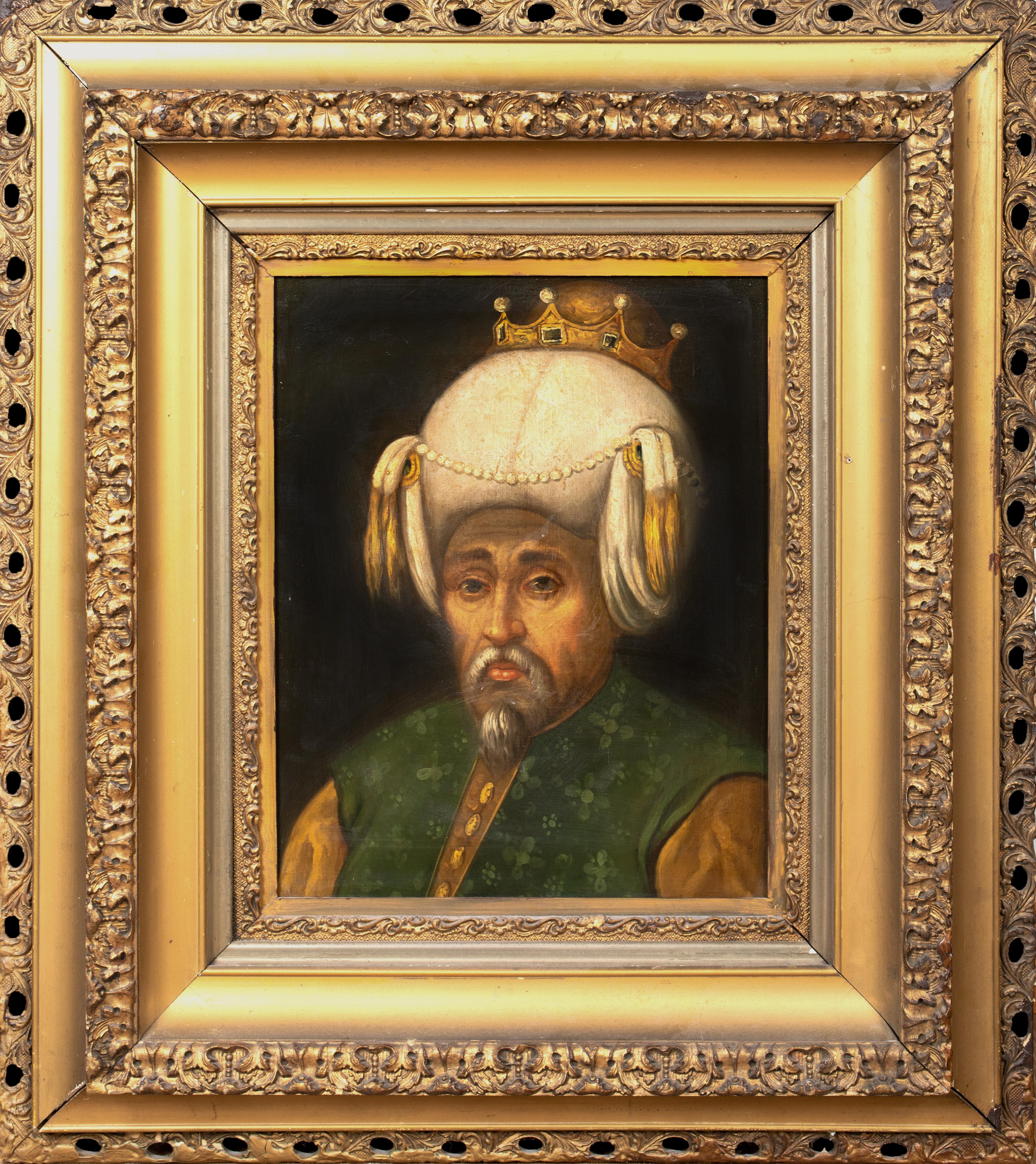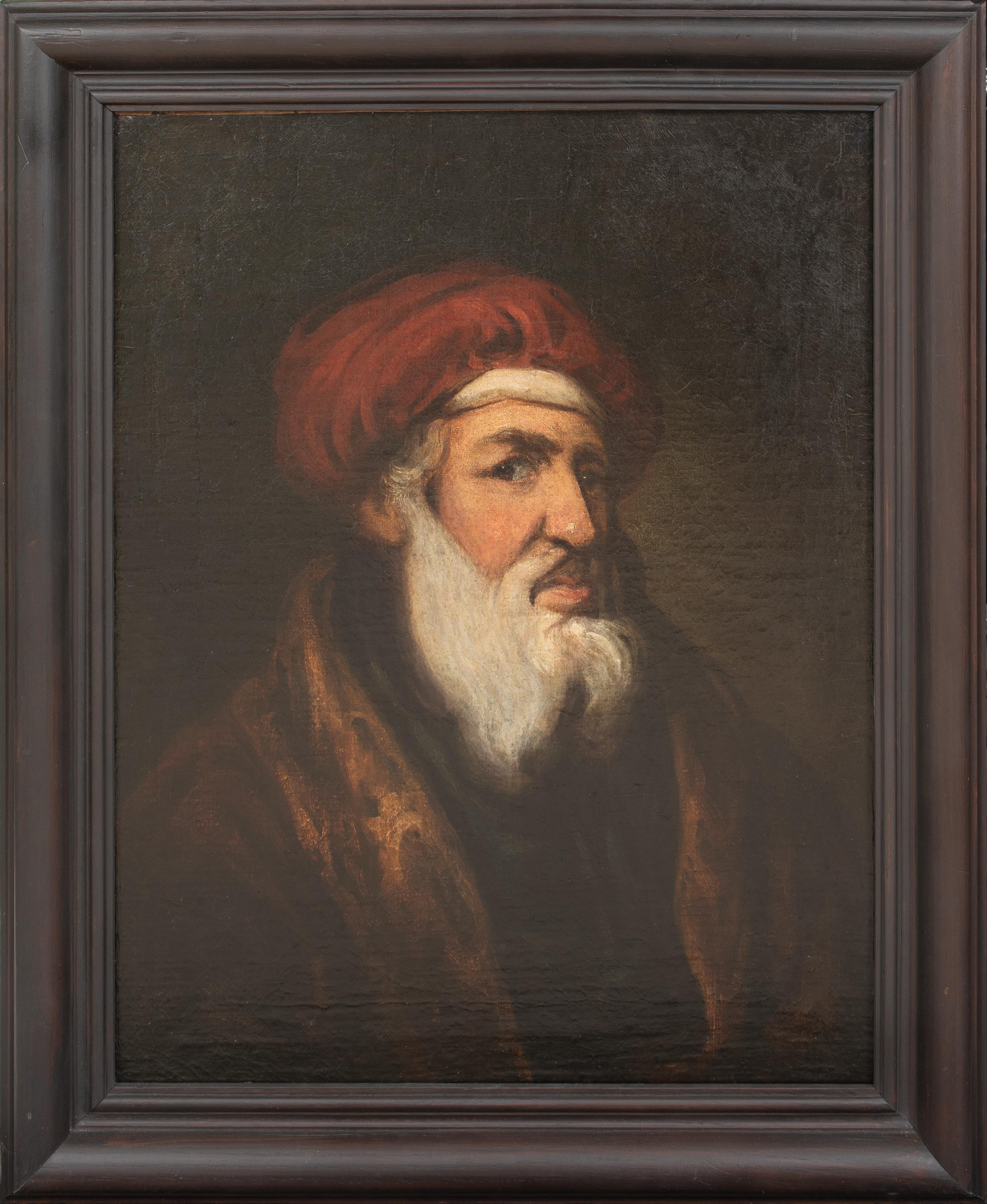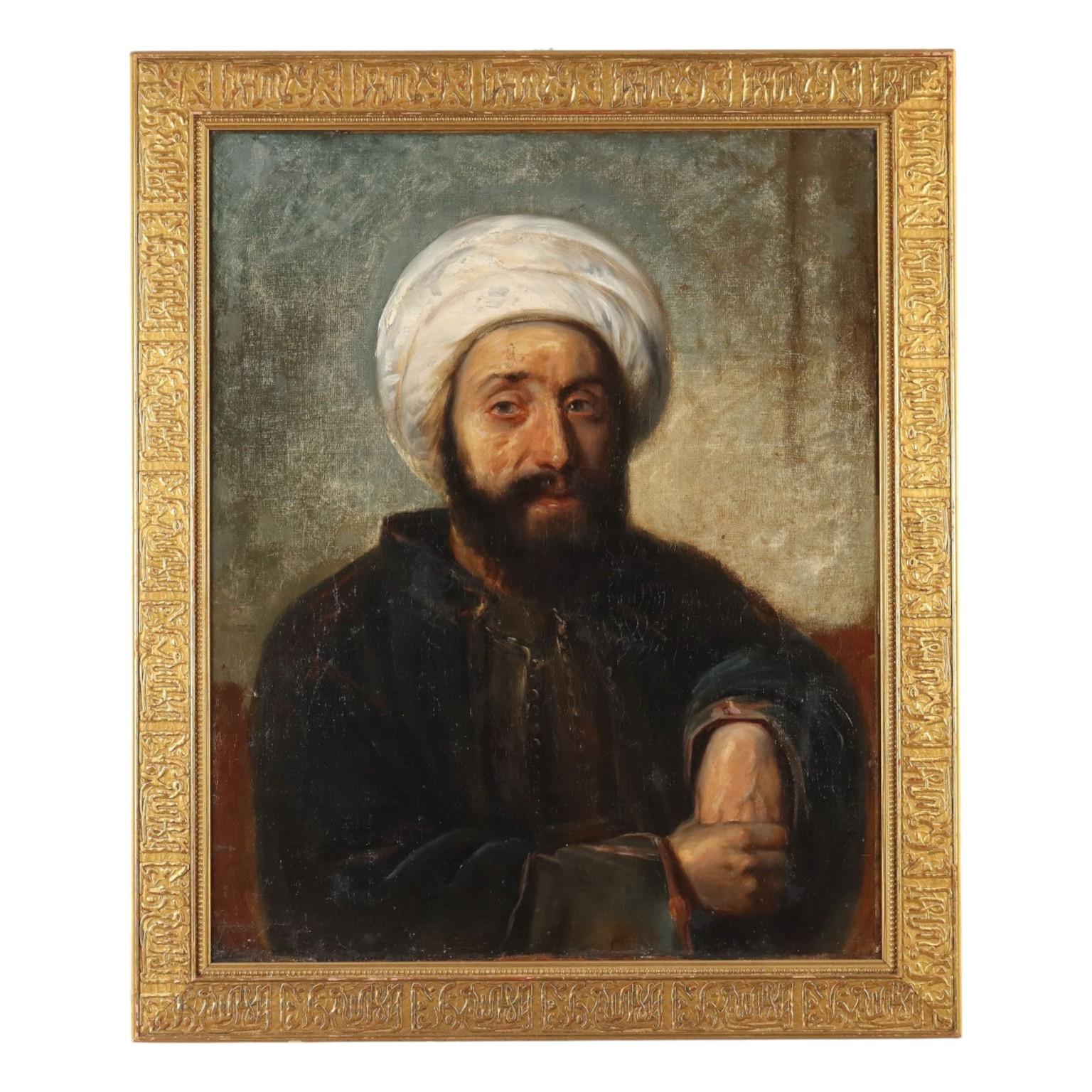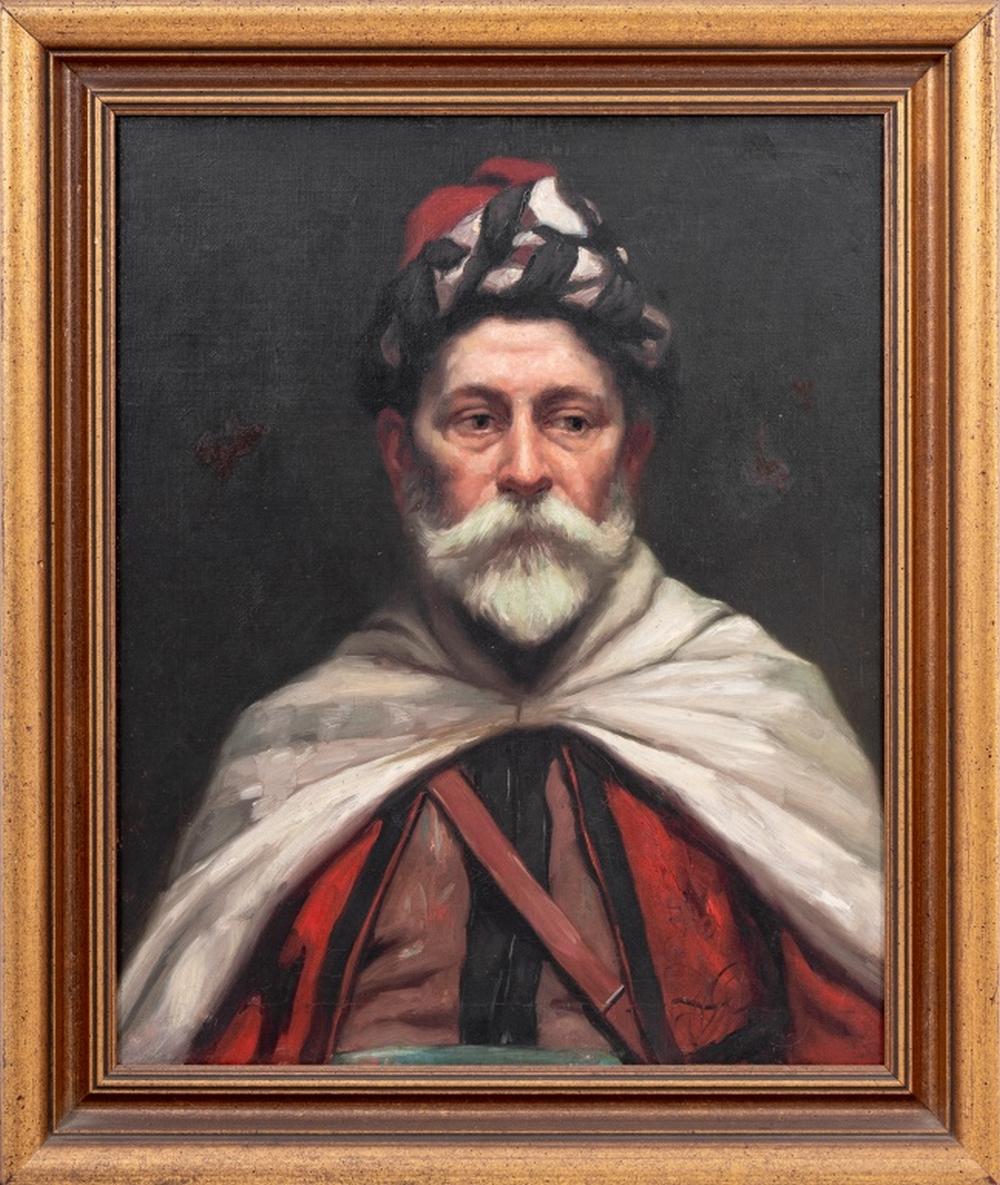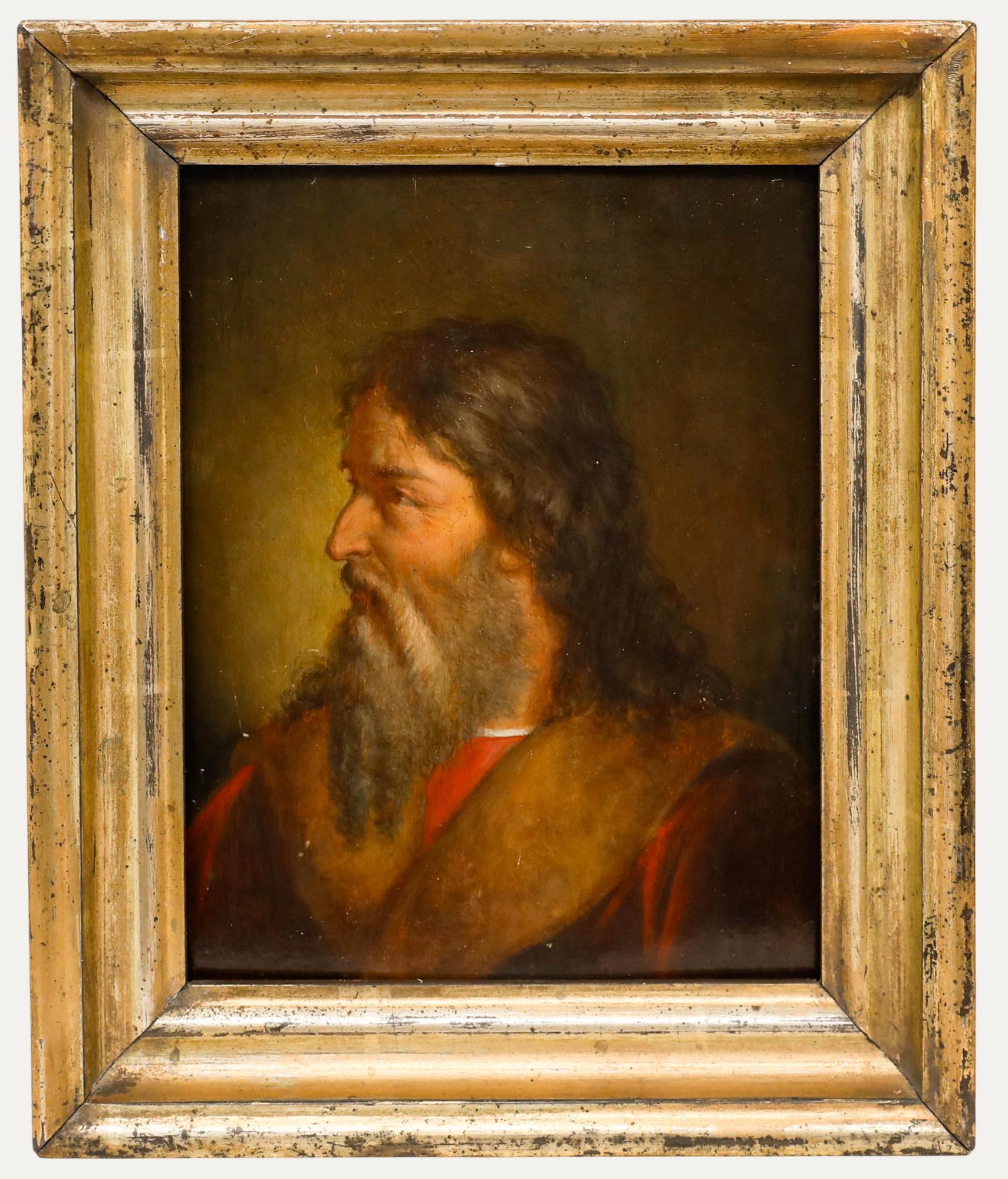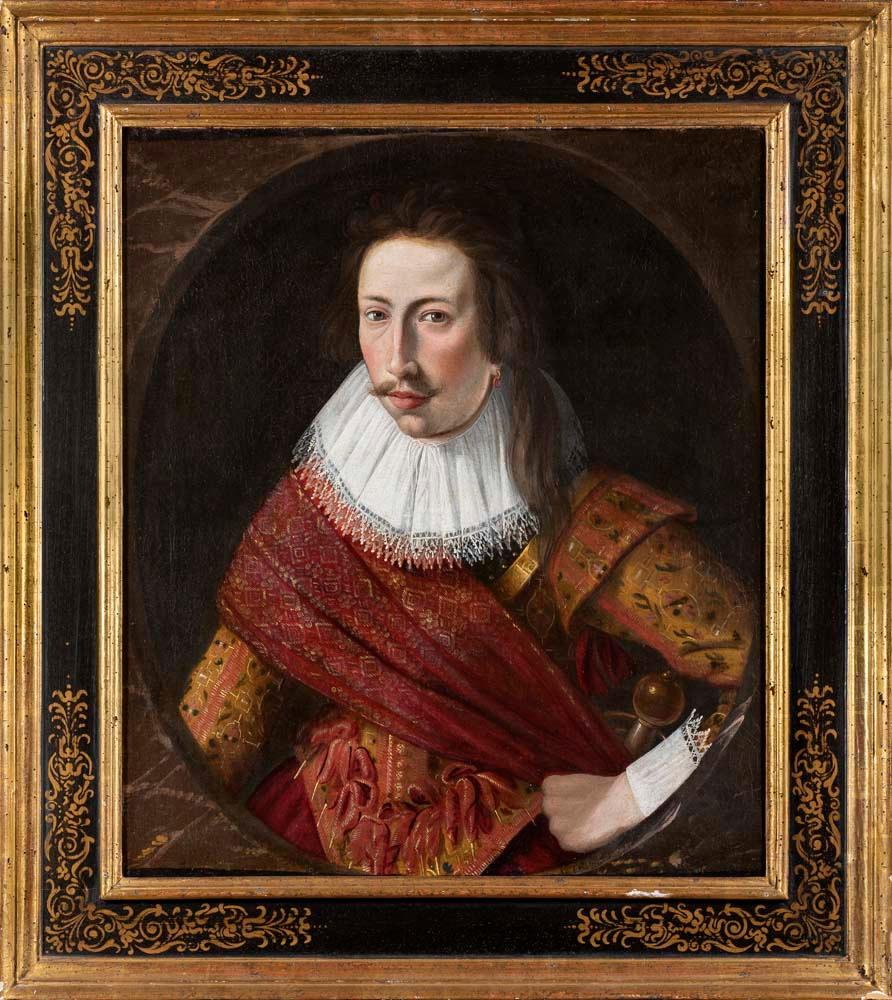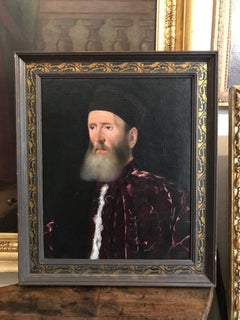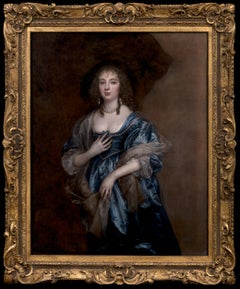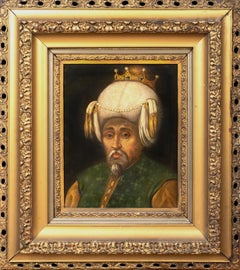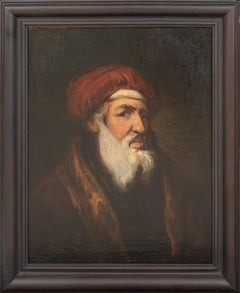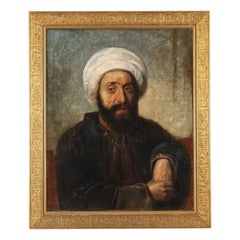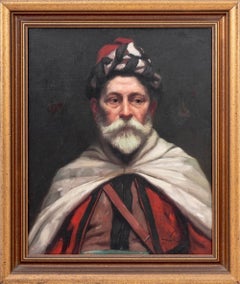Items Similar to Portrait of Ochius, also called The Passia Ahmed ex Royal Collection of Hanover
Want more images or videos?
Request additional images or videos from the seller
1 of 5
Portrait of Ochius, also called The Passia Ahmed ex Royal Collection of Hanover1689
1689
$71,471.40
$89,339.2520% Off
£52,000
£65,00020% Off
€60,837.10
€76,046.3820% Off
CA$98,491.17
CA$123,113.9620% Off
A$108,388.53
A$135,485.6620% Off
CHF 56,837.63
CHF 71,047.0420% Off
MX$1,315,395.43
MX$1,644,244.2920% Off
NOK 710,461.48
NOK 888,076.8520% Off
SEK 672,610.22
SEK 840,762.7820% Off
DKK 454,179.32
DKK 567,724.1520% Off
About the Item
Attributed to Sir Godfrey Kneller (1646 - 1723)
A Portrait of Ochius, also called The Passia Ahmed
Oil on canvas
In a gilded frame
Painted circa 1689 following the siege of Belgrade and during the period Ochius was held hostage by the Austrians. He became a renowned and colourful figure in European courts during his extensive captivity. Eventually his son paid the required 1000 gold coins for his return to Constantinople.
Dimensions:
(Frame) 54 in (H) x 43 in (W)
(Canvas) 44 ¼ in (H) x 34 in (W)
Provenance:
Hanovarian Royal Collection Schloss Georgengarten;
Fürstenhaus Anlage 1893;
Herrenhausen Anlage 1893, Old Inv. Nr. 929, New Inv. Nr. 1
- Attributed to:(Attributed to) Sir Godfrey Kneller (1646 - 1723, British)
- Creation Year:1689
- Dimensions:Height: 54 in (137.16 cm)Width: 43 in (109.22 cm)Depth: 3 in (7.62 cm)
- Medium:
- Period:
- Condition:
- Gallery Location:London, GB
- Reference Number:1stDibs: LU673310499792
About the Seller
5.0
Vetted Professional Seller
Every seller passes strict standards for authenticity and reliability
Established in 1990
1stDibs seller since 2017
42 sales on 1stDibs
Typical response time: Several days
- ShippingRetrieving quote...Shipping from: London, United Kingdom
- Return Policy
Authenticity Guarantee
In the unlikely event there’s an issue with an item’s authenticity, contact us within 1 year for a full refund. DetailsMoney-Back Guarantee
If your item is not as described, is damaged in transit, or does not arrive, contact us within 7 days for a full refund. Details24-Hour Cancellation
You have a 24-hour grace period in which to reconsider your purchase, with no questions asked.Vetted Professional Sellers
Our world-class sellers must adhere to strict standards for service and quality, maintaining the integrity of our listings.Price-Match Guarantee
If you find that a seller listed the same item for a lower price elsewhere, we’ll match it.Trusted Global Delivery
Our best-in-class carrier network provides specialized shipping options worldwide, including custom delivery.More From This Seller
View AllA Portrait of a Gentleman, thought to be Moses Diego Lopez Pereira
Located in London, GB
Austrian School, 18th Century
A Portrait of a Gentleman, thought to be Moses Diego Lopez Pereira, 1st Baron d’Aguilar, in an elaborate coat and a powdered wig
Oil on canvas
Provena...
Category
18th Century Paintings
Materials
Canvas, Oil
Portrait of an Italian Noblewoman
Located in London, GB
15th century, Italian
Circle of Antonio del Pollaiuolo (1429-1498)
Portrait of an Italian Noblewoman
Oil and tempura on poplar panel
With partial inscription: ALZETAPIN
Provenance:...
Category
15th Century and Earlier Renaissance Portrait Paintings
Materials
Oil, Tempera, Wood Panel
16th Century Italian Renaissance Old Master Portrait of a Procuratore
By Jacopo Bassano
Located in London, GB
Jacopo BASSANO (c. 1510-1592, Italian)
Portrait of a Procuratore
Oil on canvas
30 ¼ x 26 inches (including frame)
Provenance: Lucien Bonaparte’s Collection (as Portrait of Doge Priuli, Tiziano); Rich-mond, Virginia Museum, Portrait of Doge Lorenzo Priuli.
The painting is a portrait of a man half-length, on a black background. It is a three-quarter portrait, according to a custom very common in the genre of portraiture in sixteenth century. The man is wearing a decorated...
Category
16th Century Old Masters Portrait Paintings
Materials
Oil
$241,903 Sale Price
20% Off
Free Shipping
Portrait of Anne, Lady Russell, later Countess of Bedford
By Anthony van Dyck
Located in London, GB
A three-quarter length portrait of Anne, Lady Russell, later Countess of Bedford (1615-1684), in a blue dress. Attributed to Sir Anthony Van Dyck.
Anne C...
Category
17th Century Portrait Paintings
Materials
Oil
$208,916 Sale Price
24% Off
18th Century Oil Painting Portrait of Phillip, 6th Viscount Wenman.
By Nathaniel Dance-Holland
Located in London, GB
Sir Nathaniel Dance-Holland (1750-1811) was an English portrait painter and one of the founding members of the Royal Academy in 1768. Justly celebrated in his lifetime he won several...
Category
Late 18th Century Old Masters Portrait Paintings
Materials
Oil
Venetian School, Ottoman Honey Merchant
Located in London, GB
This incredibly rare early depiction of an Eastern Mediterranean or North African honey merchant is thought have been painted circa 1620. It predates th...
Category
Early 17th Century Paintings
Materials
Canvas, Oil
$219,912 Sale Price
20% Off
You May Also Like
Portrait of Osman I (1254-1323), 17th Century follower of PAOLO VERONESE (
By Paolo Veronese
Located in Blackwater, GB
Portrait of Osman I (1254-1323), 17th Century
follower of PAOLO VERONESE (1528-1588)
Large 17th Century Italian School portrait of Osman I, oil on canvas. Excellent quality and con...
Category
19th Century Portrait Paintings
Materials
Canvas, Oil
Portrait Of Identified as Topal Osman Pasha (1663–1733), 18th Century
Located in Blackwater, GB
Portrait Traditionally Identified as Topal Osman Pasha (1663–1733), 18th Century
Italian School
Large 19th Century Italian School Ottoman portrait identified as Total Osman Pasha, oil on canvas. Circa 1730 profile portrait of the Ottoman military...
Category
17th Century Portrait Paintings
Materials
Oil, Canvas
Dipinto Ritratto di Arabo con Turbante XIX secolo
Located in Milan, IT
Olio su tela. Seconda metà del XIX secolo.
Intenso ritratto in primo piano di uomo probabilmente nord- africano, che rientra nel periodo artistico definito orientalista, ovvero in q...
Category
19th Century Other Art Style Portrait Paintings
Materials
Oil
French School Portrait of an Ottoman Oil on Canvas
Located in Astoria, NY
French School, Portrait of an Ottoman, Oil on Canvas, 19th century, unsigned, giltwood frame. Image: 24" H x 19.5" W; frame: 30" H x 24.25" W.
Category
19th Century French School Portrait Paintings
Materials
Canvas, Oil
$2,800 Sale Price
24% Off
19th Century Oil - Portrait of a Scholar
Located in Corsham, GB
This painting features a profile portrait of a mature man with long hair and a full beard, set against a warm, shadowy background. The artist has skilfully captured the subject's wea...
Category
19th Century Portrait Paintings
Materials
Oil
Portrait of an Officer, Cornelius Johnson, 17th Century Old Masters
By Cornelius Johnson
Located in London, GB
Circle of Cornelius Johnson
Circa 1620’s
Portrait of a Officer
Oil on canvas
Image size: 28 x 24 inches
Period style hand made frame
Provenance
Private European Estate
This striking portrait dates to around 1620, as you can see from the images of the sash the detail is very high. The sash is decorated with gold thread and would have cost a small fortune at the time. Sashes were originally developed for a military function (making officers more visible for their men during combat), but soon became a primarily male fashion...
Category
Early 17th Century Old Masters Portrait Paintings
Materials
Oil
More Ways To Browse
Antique Gold Coins
Royal Provenance
Royal Oil Portrait
Oil Paint Royal Portraits
17th And 18th Century Portraits
1920 Oil Portraits
Antique Family Portraits
Russia Portrait
Gentleman Oil Portrait
Gilt Framed Woman Portrait Oil Paintings
16th Century Portrait Oil Paintings
Portrait Of A Woman Reading
Painted Portrait Girl In Pink
Oil On Panel Portrait
Child Antique Portraits
Period Portraits
17th Century Dutch Portrait Oil Paintings
Lady In Red
